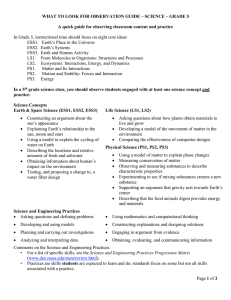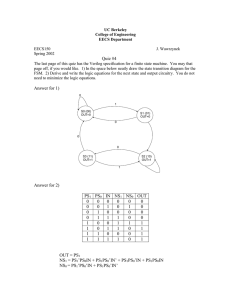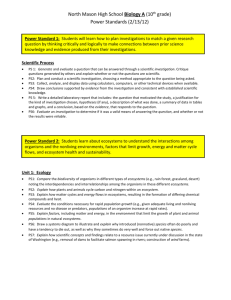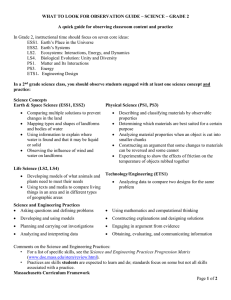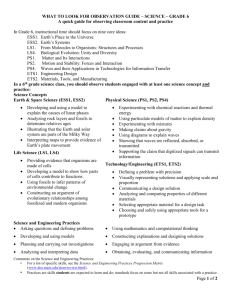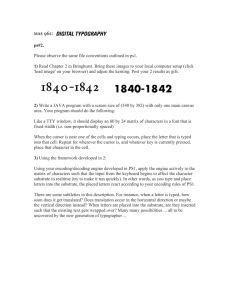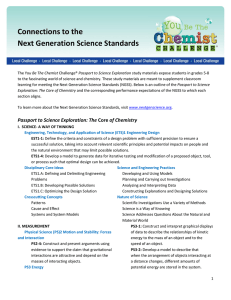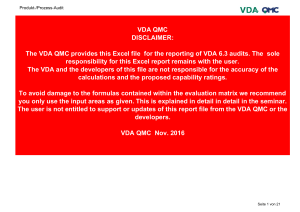A hazard-based standard Part 1
advertisement
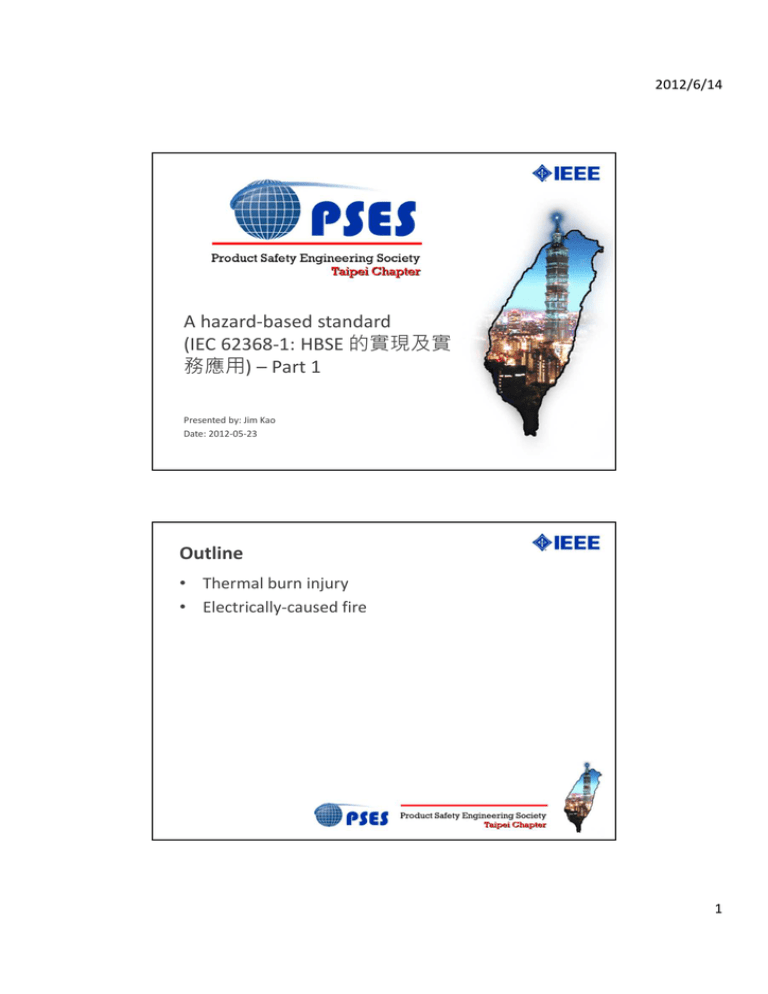
2012/6/14 A hazard-based standard (IEC 62368-1: HBSE 的實現及實 務應用) – Part 1 Presented by: Jim Kao Date: 2012-05-23 Outline • Thermal burn injury • Electrically-caused fire 1 2012/6/14 Thermal burn injury Thermal transfer 2 2012/6/14 Parameters for thermal conduction • temperature difference between the part and the body; • the thermal conductivity (or thermal resistance) between the hot part and the body; • the area of contact; • the duration of contact. Thermal energy parameters 3 2012/6/14 Definition of TS1 TS1 is a class1 thermal energy source with temperature levels – not exceeding TS1 limits under • normal operating conditions; and • single fault conditions of a component, device or insulation not serving as a safeguard; and (proposed 2nd ed.) – not exceeding TS2 limits under • abnormal operating conditions; or • single fault conditions of a basic safeguard. (proposed 2nd ed.) Definition of TS2 TS2 is a class 2 thermal energy source where: – the temperature exceeds the TS1 limits; and – under normal operating conditions, abnormal operating conditions or single fault conditions the temperature does not exceed the TS2 limits. Where the malfunction of the equipment is evident, no limits apply. TS2 may be accessible to an ordinary persons if an instructional safeguard is in place. 4 2012/6/14 Definition of TS3 TS3 is a class 3 thermal energy source where the temperature exceeds the TS2 limits in Table 42 under normal operating conditions or under abnormal operating conditions, or under single fault conditions. Table 42 5 2012/6/14 Table 42 Table 42 6 2012/6/14 Table 42 Questions? 7 2012/6/14 Electrically-caused fire Fire triangle PS3 PS1 PS2 Fuel 8 2012/6/14 Power measurement for worst-case load fault (load fault) Power measurement for worst-case power source fault (source fault) 9 2012/6/14 Power source classification Power source classification 10 2012/6/14 Definition of PS1 PS1 is a circuit where the power source, measured according to 6.2.2, does not exceed: • 500 W measured during the first 3 s; and • 15 W measured after 3 s. For the purpose of this standard, the power available from external circuits described in Table 16, ID numbers 11, 12, 13 and 14, are considered to be PS1. Definition of PS2 and PS3 PS2 is a circuit where the power source, measured according to 6.2.2: • exceeds PS1 limits; and • does not exceed 100 W measured after 5 s. Circuits that meet the requirements of Annex Q are considered to be PS2 circuits. (108/479/CDV) PS3 is a circuit whose power source exceeds PS2 limits, or any circuit whose power source has not been classified. 11 2012/6/14 Illustration of power source classification Fire spread Ignition Definition of Arcing PIS Determination of an arcing PIS is performed under normal operating conditions unless otherwise specified. An arcing PIS is a location with the following characteristics: • an open circuit voltage (measured after 3 s) across an open conductor or opening electrical contact exceeding 50 V (peak) a.c. or d.c.; and • the product of the peak of the open circuit voltage (Vp) and the measured r.m.s. current (Irms) exceeds 15 (that is, Vp × Irms >15) for any of the following: - a contact; - a termination; - opening of a conductor. 12 2012/6/14 Definition of Arcing PIS Reliable or redundant connections are not considered to be an arcing PIS. Examples of connections that could be considered reliable are: • holes of solder pads on a printed board that are through-metallized; • tubular rivets/eyelets that are additionally soldered; • machine-made or tool-made crimp or wire-wrap connections. Definition of Resistive PIS A resistive PIS is any part in a PS2 or PS3 circuit that: • has a power capability to dissipate more than 15 W measured after 30 s of normal operation; or • has an available power exceeding 15 W measured 30 s after the introduction of the fault. 13 2012/6/14 Basic Safeguard – ignition shall not occur; and – no part of the equipment shall attain a temperature value greater than 90 % of the autoignition temperature limit, in Celsius, of the part as defined by ISO 871. When the autoignition temperature of the material is not known, the temperature shall be limited to 300 °C; and – combustible materials for components and other parts outside fire enclosures, shall have a material flammability class of at least: • HB75 if the thinnest significant thickness of this material is <3 mm, or • HB40 if the thinnest significant thickness of this material is ≥3 mm, or • HBF. Supplementary safeguard – Reduce the likelihood of ignition PS3 PS2 PS1 PS3 PS1 14 2012/6/14 Supplementary safeguard – Control of fire spread PS3 PS2 PS1 PS1 PS3 PS1 Questions? 15 2012/6/14 謝謝大家的時間! Jim Kao Jim.Kao@ul.com 16
